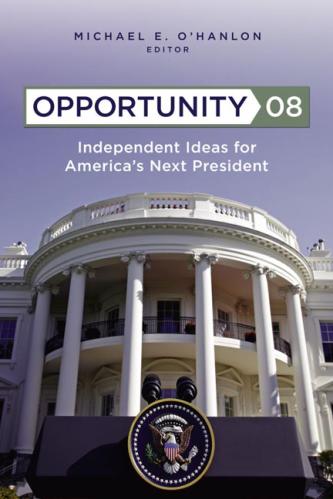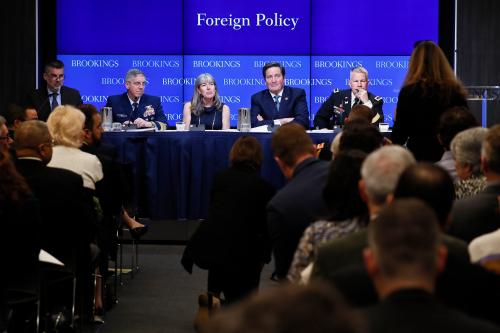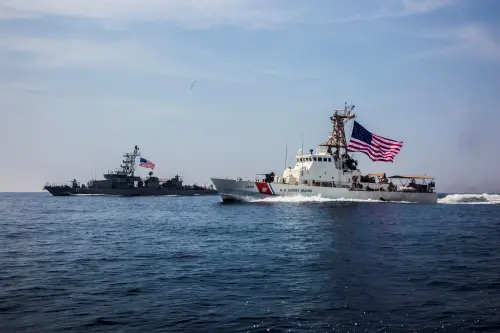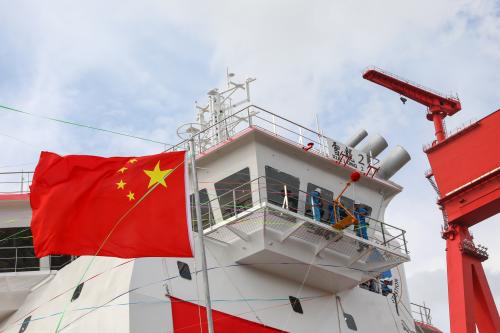The U.S. Coast Guard has protected the United States—and has acted as a critical instrument of security and diplomacy—for over two centuries. Its duties are many, and despite its relatively small size, there is little question that the Coast Guard lives up to its motto of “Always ready.”
On November 29, Brookings’s Center for 21st Century Security and Intelligence hosted Admiral Paul F. Zukunft, the Coast Guard’s 25th commandant. Admiral Zukunft discussed the opportunities and challenges facing today’s Coast Guard and looked ahead to the needs of the future. Brookings Senior Fellow Michael O’Hanlon moderated the event.
Flow of people
Although it has a personnel of just over 40,000 active-duty members, the U.S. Coast Guard has many important missions. Among its most consuming are issues related to the Western Hemisphere, immigration, counter-narcotics, the Arctic, and facilitating commerce. This list makes it clear that maintaining talent in the all-volunteer force is vital.
Immigration has been a hot button issue as of late. Admiral Zukunft pointed out that recent Gallup polling indicates the United States is still—by far—the most sought-after country for people who are seeking a new home.
Given this, and given the potential for significant changes to immigration policies ahead, an uptick in migrants has been noted over the past year or so. Zukunft pointed to the “wet foot, dry foot” policy on Cubans and the unique challenges associated with it, including people who cause self-harm to end up in a U.S. hospital rather than being sent home.
While there is considerable public and political focus on the border with Mexico, Admiral Zukunft reminded the audience that it is only part of the larger picture. “If you secure the Southwest border, it is now a maritime threat,” he said.
Flow of illicit goods
The maritime threats go well beyond immigration. Another key concern for the Coast Guard is counter-narcotics.
Fueled by demand in the United States and elsewhere, fiscal year 2016 brought an increased flow of drugs to the country—but it was also a record year for drug interdiction by the Coast Guard, according to Zukunft. He noted that 20 percent of the drug flow into the United States comes from the Caribbean, with 80 percent via the Eastern Pacific region. The Coast Guard is one of the main lines of defense, because it has the unique authority to enforce the rule of law on the sea.
In addition to slowing the flow of drugs, stopping smugglers also has the added benefit of gaining intelligence. Even when protecting their own group, most smugglers will end up giving up details on rivals, Zukunft noted.
Drug smuggling is just one of several non-state actor concerns that have flourished in recent decades. Zukunft sees no end to this, and believes such challenges will continue to impose significant demands on the Coast Guard in the years to come.
Northern territory
Another long-term concern for the Coast Guard is the Arctic. Zukunft argued that, for the Coast Guard, the “Western Hemisphere and Arctic are sacrosanct.” Despite the growing importance of an increasingly ice-free Arctic, the Coast Guard is operating with limited capability to operate in the region.
The current state of U.S. ice breaking is “miserable,” according to Zukunft. “We had seven ice breakers when I entered the service,” he said. When it comes to heavy ice breaking, the Coast Guard is now down to one ship—the Polar Star—and there has not been a new one built in 40 years.
Although this is a challenge, particularly given that other countries (such as Russia) have interests in the region, Admiral Zukunft was optimistic that more ice breakers will be built. Congress has set aside funds, and industry is eager to help, he said.
The Coast Guard does a lot with a little.
Looking ahead
Queried by Michael O’Hanlon if today’s Coast Guard was large enough, Zukunft observed that one could imagine making a case for a force of 50,000, but that he also needed to ground any such options in strong analysis, while bearing in mind serious national fiscal constraints. He reiterated the need for more ice breakers—three heavy and three medium—while reminding everyone that this is not a static environment. The service must be able to evolve as rapidly as the environment it operates in does.
Any concerns aside, the overall tenor of the discussion was positive. The Coast Guard does a lot with a little. It is also a bridge-builder with other nations. Zukunft was hopeful that challenges like dealing with Russia in the Arctic can end up being opportunities to strengthen bilateral and multilateral relationships in the years ahead.
The Brookings Institution is committed to quality, independence, and impact.
We are supported by a diverse array of funders. In line with our values and policies, each Brookings publication represents the sole views of its author(s).










Commentary
Always ready: Ensuring today’s Coast Guard can meet the challenges of tomorrow
December 2, 2016